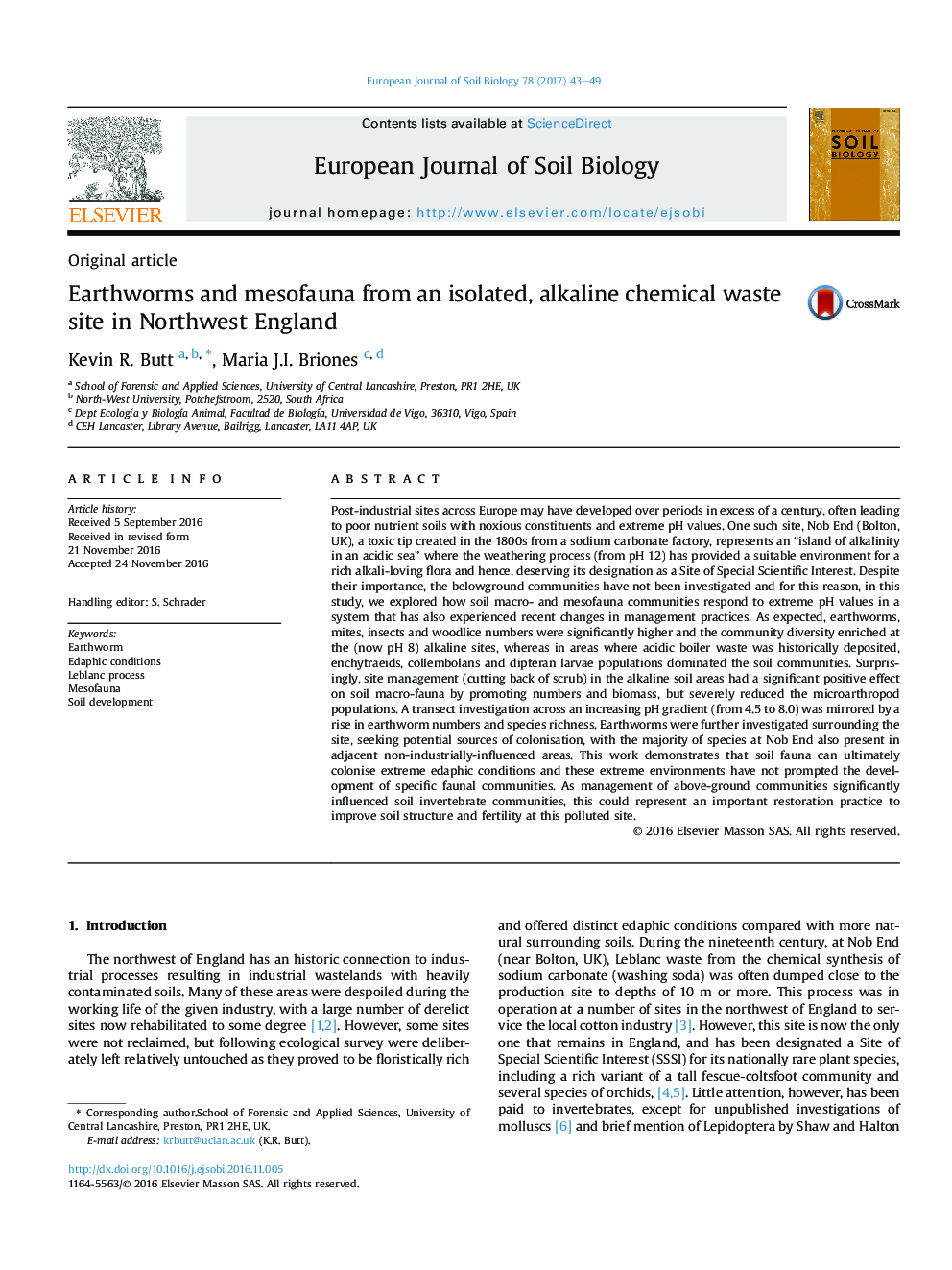| کد مقاله | کد نشریه | سال انتشار | مقاله انگلیسی | نسخه تمام متن |
|---|---|---|---|---|
| 5744236 | 1618114 | 2017 | 7 صفحه PDF | دانلود رایگان |
عنوان انگلیسی مقاله ISI
Earthworms and mesofauna from an isolated, alkaline chemical waste site in Northwest England
ترجمه فارسی عنوان
کرم های خاکی و مازوفونا از یک سایت زباله شیمیایی جدا شده و قلیایی در شمال غربی انگلستان
دانلود مقاله + سفارش ترجمه
دانلود مقاله ISI انگلیسی
رایگان برای ایرانیان
موضوعات مرتبط
علوم زیستی و بیوفناوری
علوم کشاورزی و بیولوژیک
دانش خاک شناسی
چکیده انگلیسی
Post-industrial sites across Europe may have developed over periods in excess of a century, often leading to poor nutrient soils with noxious constituents and extreme pH values. One such site, Nob End (Bolton, UK), a toxic tip created in the 1800s from a sodium carbonate factory, represents an “island of alkalinity in an acidic sea” where the weathering process (from pH 12) has provided a suitable environment for a rich alkali-loving flora and hence, deserving its designation as a Site of Special Scientific Interest. Despite their importance, the belowground communities have not been investigated and for this reason, in this study, we explored how soil macro- and mesofauna communities respond to extreme pH values in a system that has also experienced recent changes in management practices. As expected, earthworms, mites, insects and woodlice numbers were significantly higher and the community diversity enriched at the (now pH 8) alkaline sites, whereas in areas where acidic boiler waste was historically deposited, enchytraeids, collembolans and dipteran larvae populations dominated the soil communities. Surprisingly, site management (cutting back of scrub) in the alkaline soil areas had a significant positive effect on soil macro-fauna by promoting numbers and biomass, but severely reduced the microarthropod populations. A transect investigation across an increasing pH gradient (from 4.5 to 8.0) was mirrored by a rise in earthworm numbers and species richness. Earthworms were further investigated surrounding the site, seeking potential sources of colonisation, with the majority of species at Nob End also present in adjacent non-industrially-influenced areas. This work demonstrates that soil fauna can ultimately colonise extreme edaphic conditions and these extreme environments have not prompted the development of specific faunal communities. As management of above-ground communities significantly influenced soil invertebrate communities, this could represent an important restoration practice to improve soil structure and fertility at this polluted site.
ناشر
Database: Elsevier - ScienceDirect (ساینس دایرکت)
Journal: European Journal of Soil Biology - Volume 78, JanuaryâFebruary 2017, Pages 43-49
Journal: European Journal of Soil Biology - Volume 78, JanuaryâFebruary 2017, Pages 43-49
نویسندگان
Kevin R. Butt, Maria J.I. Briones,
